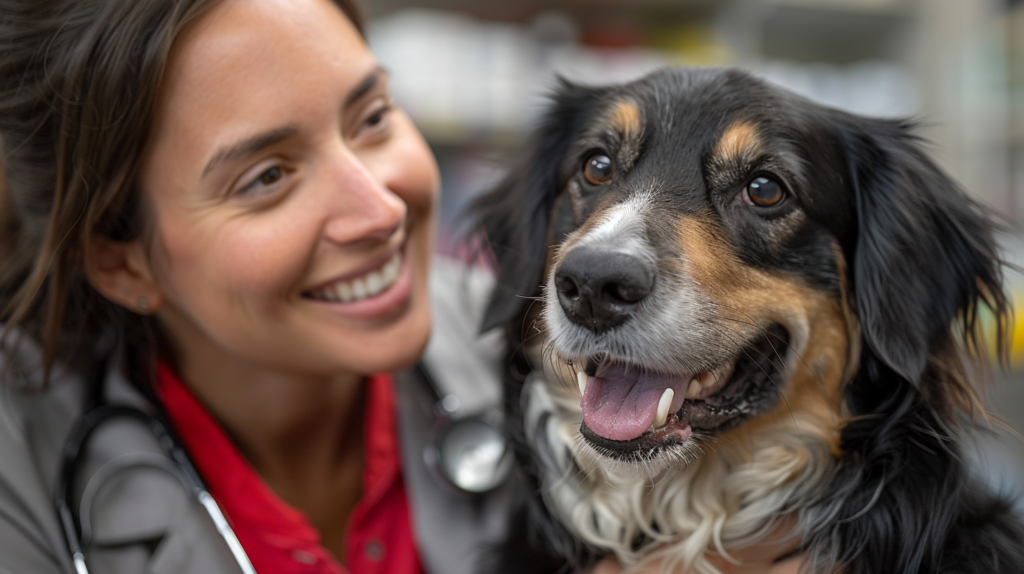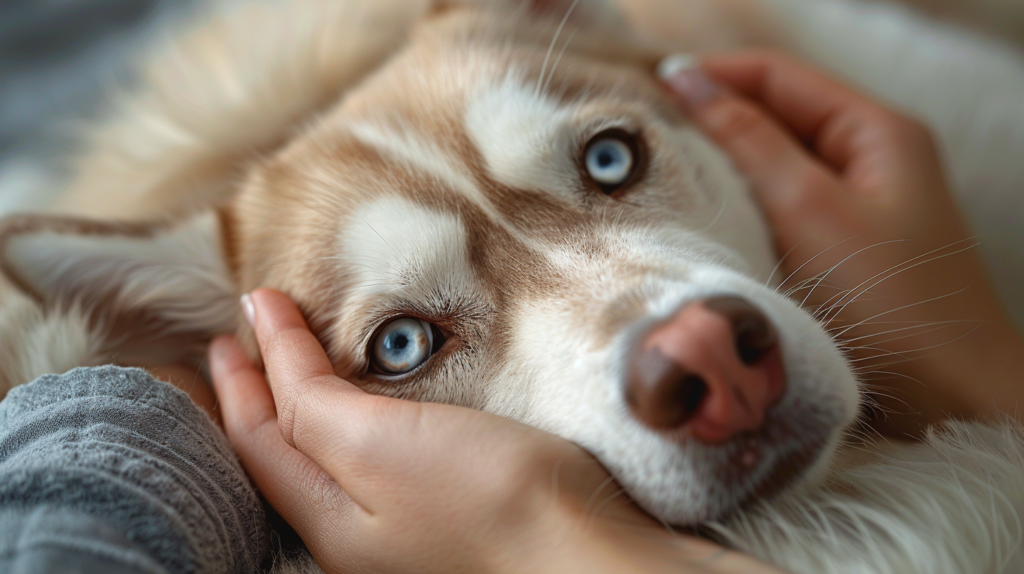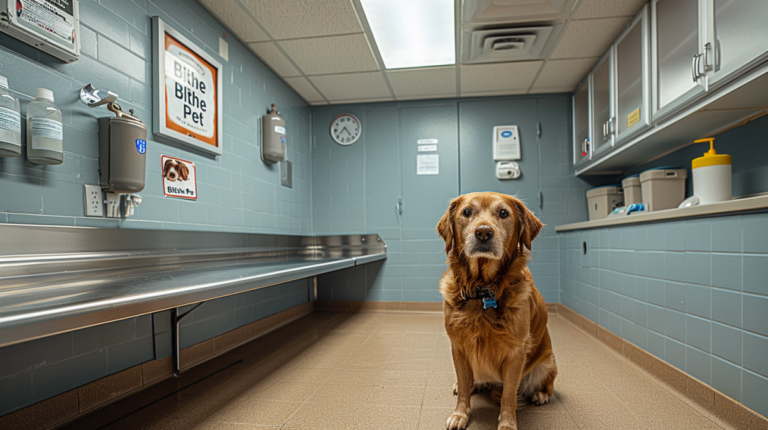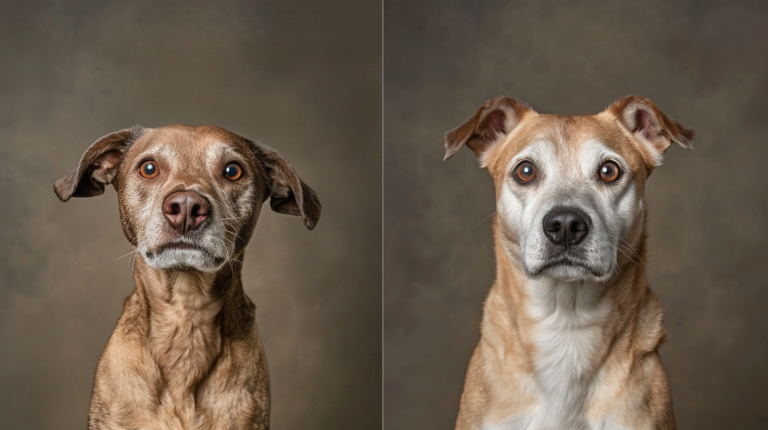Discover 7 crucial pet illness signs every owner should know. Our expert guide on recognizing pet illness helps catch health problems early, potentially saving your pet’s life.
Table of Contents
As pet parents, we share our homes and hearts with our furry companions, but unlike human family members, they can’t tell us when something’s wrong. Recognizing pet illness early can mean the difference between a quick recovery and a serious health crisis. This comprehensive guide will equip you with the knowledge to identify seven critical warning signs that your beloved companion might be unwell, ensuring you can take prompt action when it matters most.
Why Early Detection Matters in Pet Healthcare

Before diving into specific symptoms, it’s crucial to understand why recognizing pet illness promptly is so vital. According to the American Veterinary Medical Association, early intervention can:
- Reduce treatment costs by up to 30%
- Minimize pet suffering and discomfort
- Prevent minor issues from becoming life-threatening
- Increase treatment success rates by as much as 60%
- Extend your pet’s lifespan and quality of life
Dr. Sarah Johnson, DVM at Cornell University College of Veterinary Medicine, emphasizes: “The most successful treatment outcomes I’ve seen consistently involve attentive pet owners who noticed subtle changes in their pet’s behavior before severe symptoms developed.”
Now, let’s explore the seven critical warning signs you should never ignore.
Sign #1: Changes in Eating and Drinking Habits

One of the earliest and most telling indicators of pet illness is a shift in your pet’s normal consumption patterns.
Decreased Appetite
When your typically food-motivated pet suddenly shows disinterest in meals, it warrants attention. A decreased appetite could signal various issues:
- Dental problems making eating painful
- Gastrointestinal distress
- Kidney disease
- Infection or fever
- Stress or anxiety
A 2023 study in the Journal of Veterinary Medicine found that approximately 78% of pets with serious illnesses exhibited appetite changes at least 48 hours before other noticeable symptoms appeared.
Increased Thirst (Polydipsia)
If your pet is drinking noticeably more water than usual, this could indicate:
- Diabetes mellitus
- Kidney dysfunction
- Cushing’s disease
- Urinary tract infection
- Hyperthyroidism (particularly in cats)
Warning Sign: Monitor water bowl refill frequency. A 50% increase in water consumption warrants veterinary consultation.
Monitoring Tips:
- Measure food and water consumption daily when possible
- Note any pattern changes (e.g., refusing dry food but accepting wet food)
- Track timing (is your pet eating less overall or just at certain times?)
- Document any vomiting after eating or drinking
Sign #2: Behavioral and Energy Level Changes

Our pets have distinct personalities and energy levels. Significant deviations from their normal behavior often serve as reliable indicators of pet illness.
Lethargy and Decreased Activity
A normally playful pet who suddenly prefers sleeping to their favorite activities might be experiencing:
- Pain or discomfort
- Metabolic disorders
- Anemia
- Heart disease
- Respiratory issues
- Depression
According to veterinary behaviorist Dr. Karen Wright: “Animals instinctively conserve energy when fighting illness. If your normally energetic pet becomes a couch potato overnight, don’t assume they’re just having a lazy day.”
Increased Irritability or Aggression
Even the gentlest pets may display uncharacteristic aggression when unwell:
- Snapping when touched in certain areas (indicating pain)
- Growling when approached during rest
- Hiding or avoiding interaction
- Uncharacteristic biting or scratching
Social Withdrawal
Many pets seek isolation when feeling unwell:
- Hiding in unusual places
- Avoiding family interaction
- Resisting being held or petted
- Seeking quiet, dark spaces
Case Study: Max the Labrador
Ten-year-old Max started refusing his morning walks and sleeping more than usual. His owners initially attributed this to aging, but when they brought him to the vet, bloodwork revealed early kidney disease. With dietary changes and medication, Max’s energy levels improved significantly within weeks.
Sign #3: Changes in Bathroom Habits and Digestive Issues

Monitoring your pet’s waste might not be glamorous, but it provides valuable health insights.
Urinary Changes
Watch for these warning signs:
- Increased frequency of urination
- Straining to urinate
- Blood in urine
- Urinating in inappropriate places
- Crying while urinating
These symptoms could indicate urinary tract infections, bladder stones, kidney disease, or in male cats, a potentially fatal urinary blockage requiring immediate emergency care.
Digestive Disturbances
Pay attention to:
- Diarrhea lasting more than 24 hours
- Constipation or straining to defecate
- Vomiting (especially if recurrent)
- Unusual stool color, consistency, or content
- Excessive gas or bloating
A comprehensive study by the Companion Animal Parasite Council found that 34% of pets with internal parasites showed digestive symptoms before any other signs of pet illness.
Monitoring Tips:
- For litter box users, consider temporarily using white litter to better observe changes
- Take photos of concerning stool samples to show your veterinarian
- Keep a log of frequency and consistency changes
- Note any correlation between diet changes and digestive issues
Sign #4: Respiratory Changes and Coughing

Breathing abnormalities in pets always warrant prompt attention as they can indicate serious health concerns.
Coughing
Different cough patterns can suggest specific conditions:
- Dry, hacking cough: Kennel cough or tracheal irritation
- Wet, productive cough: Pneumonia or bronchitis
- Nighttime coughing: Potential heart disease, especially in older dogs
- Exercise-induced coughing: Collapsing trachea or heart issues
Breathing Difficulties
Watch for these concerning signs:
- Increased respiratory rate at rest (normal is 10-30 breaths per minute for dogs, 20-30 for cats)
- Labored breathing with visible chest/abdominal effort
- Open-mouth breathing in cats (almost always abnormal)
- Noisy breathing or wheezing
- Blue-tinged gums (requires immediate emergency care)
Dr. Michael Peterson, veterinary pulmonologist, states: “Respiratory changes are frequently overlooked by pet owners because they can be subtle. Counting your pet’s respiratory rate while they’re sleeping once a week establishes a baseline that helps identify problems early.”
Emergency Warning: Any significant breathing difficulty should be treated as an emergency requiring immediate veterinary attention.
Sign #5: Skin, Coat, and External Changes

Your pet’s external appearance offers valuable clues about their internal health.
Coat Changes
A healthy coat should be shiny and relatively clean. Watch for:
- Excessive shedding beyond seasonal changes
- Dull, dry, or brittle fur
- Bald patches or hair loss
- Excessive dandruff or scaling
- Increased oiliness or greasiness
Skin Issues
Healthy skin should be free of the following:
- Redness or inflammation
- Unusual lumps, bumps, or growths
- Foul odors
- Excessive itching or scratching
- Hot spots or moist dermatitis
- Non-healing wounds or sores
Eye and Ear Changes
These sensitive organs often reflect systemic health problems:
- Eye discharge or cloudiness
- Redness or squinting
- Ear odor or discharge
- Head shaking or ear scratching
- Swelling around eyes or ears
According to the Veterinary Dermatology Journal, approximately 60% of skin conditions reflect underlying health issues rather than primary dermatological problems, making skin changes important indicators of recognizing pet illness.
| Skin/Coat Change | Potential Related Health Concerns |
| Symmetrical hair loss | Hormonal imbalance, Cushing’s disease |
| Excessive dandruff | Nutritional deficiencies, allergies |
| Greasy coat | Seborrhea, thyroid dysfunction |
| New lumps | Infections, cysts, tumors |
| Hot spots | Allergies, parasites, anxiety |
Sign #6: Mobility Issues and Pain Signals

Pets are masters at hiding pain, but careful observation can reveal subtle cues.
Movement Changes
Watch for these indicators:
- Limping or favoring a limb
- Difficulty rising from rest
- Reluctance to jump, climb stairs, or exercise
- Stiffness after resting
- Abnormal gait or movement pattern
- Bunny-hopping (both back legs moving together)
Pain Signals
Pets demonstrate discomfort through:
- Vocalizing (whimpering, crying, growling) when touched
- Excessive panting not related to heat or exercise
- Reduced flexibility or inability to groom certain areas
- Unusual postures when sitting or lying down
- Licking or focusing attention on specific body areas
The American Animal Hospital Association estimates that arthritis affects approximately 80% of dogs over age 8, yet owners identify less than 25% of cases without veterinary assessment because pets naturally mask pain.
Monitoring Tip: Record a video of your pet walking and playing when healthy. This provides an invaluable comparison point if you suspect movement problems later.
Sign #7: Neurological and Cognitive Changes

Changes in your pet’s mental status, coordination, or sensory responses can indicate serious health concerns.
Balance and Coordination Issues
Be alert for:
- Head tilting
- Circling or walking in patterns
- Stumbling or falling
- Loss of coordination
- Inability to judge distances
Cognitive Changes
Especially important in senior pets:
- Disorientation or confusion
- Failure to recognize family members
- Changes in sleep-wake cycles
- House-training accidents in previously trained pets
- Staring at walls or into space
- Decreased response to name or commands
Seizures and Tremors
These serious neurological signs include:
- Full seizures with loss of consciousness
- Localized muscle twitching
- Trembling or shaking not associated with fear or cold
- Facial twitching
- Jaw chattering
Dr. Elizabeth Morrison, veterinary neurologist, notes: “Neurological issues in pets often begin subtly. The pet who suddenly starts bumping into furniture on their right side might have early-stage neurological disease affecting their vision or spatial awareness.”
Real-World Example: A study from the University of California Veterinary Medical Center found that 65% of pets diagnosed with brain tumors showed subtle neurological changes that owners noticed at least 1-2 months before diagnosis, emphasizing the importance of recognizing pet illness early.
Putting It All Together: Creating a Pet Health Monitoring System
Now that you understand the critical warning signs, establishing a regular monitoring routine can help with early recognition of pet illness.
Weekly Health Check Routine
Implement this 10-minute weekly check:
- Hands-on examination:
- Run your hands over your pet’s body feeling for lumps, bumps, or painful areas
- Check ears for cleanliness and odor
- Examine eyes for clarity and discharge
- Look at gums for color (should be pink, not white, blue, or yellow)
- Behavior baseline:
- Note energy levels
- Track food and water consumption
- Monitor waste production
- Observe social interaction
- Weight monitoring:
- Weigh your pet monthly (unexplained weight loss or gain can indicate health issues)
- Take photos from the side and above quarterly to track body condition
When to Call the Veterinarian Immediately
While some symptoms warrant monitoring, others require immediate attention:
- Difficulty breathing
- Collapse or inability to stand
- Severe bleeding
- Suspected poisoning
- Seizures
- Severe trauma
- Inability to urinate despite trying
- Extreme pain or distress
- Prolapsed tissues
- Severe vomiting or diarrhea with lethargy
Expert Insights on Recognizing Pet Illness
Veterinarians consistently emphasize the importance of owner vigilance. Dr. James Wilson, president of the American Veterinary Society of Animal Behavior, shares: “The single most valuable diagnostic tool we have isn’t in our veterinary clinic—it’s the observant pet owner who knows their animal’s normal behavior and can identify meaningful changes.”
The American Veterinary Medical Association recommends establishing a “normal baseline” for your pet, including:
- Typical daily water consumption
- Average meal completion time
- Normal energy levels throughout the day
- Usual bathroom habits and stool consistency
- Sleeping patterns and positions
Veterinarian Tip: Many clinics now offer telemedicine consultations for initial assessment of non-emergency concerns, allowing you to get professional guidance quickly.
Special Considerations for Different Life Stages
Puppies and Kittens
Young animals face different health risks:
- Congenital conditions may become apparent in the first year
- Parasites are more common and potentially more dangerous
- Infectious diseases pose greater risks before vaccination series completion
- Growth-related orthopedic issues may emerge
- Signs of illness can progress much faster than in adult pets
Senior Pets
Older animals require more vigilant monitoring:
- Chronic disease risk increases significantly after age 7 (large dogs) or 9 (cats and small dogs)
- Cognitive changes may be mistaken for “just getting old”
- Multiple conditions often occur simultaneously
- Medication side effects become more common
- Recovery times lengthen
According to the Senior Pet Health Council, semi-annual veterinary visits for pets over 7 years old can increase early disease detection by 48%.
For more expert pet care tips and product recommendations, visit BlithePet.com — your trusted source for pet wellness.
Frequently Asked Questions
How can I tell if my pet’s symptoms are an emergency or can wait for a regular appointment?
Emergencies typically include difficulty breathing, collapse, seizures, suspected poisoning, severe bleeding, prolapsed tissues, inability to urinate, and extreme pain. If your pet is eating, drinking, and maintaining normal activity levels but showing mild symptoms, monitoring for 24 hours may be appropriate. When in doubt, call your veterinary clinic—most have staff available to help determine urgency.
Why do pets hide their illness?
This behavior stems from evolutionary instinct. In the wild, showing weakness makes animals vulnerable to predators. Domesticated pets retain this survival mechanism, which is why illness signs are often subtle until conditions become advanced. This natural tendency makes regular monitoring especially crucial for early pet illness recognition.
How often should I weigh my pet to monitor for health changes?
Monthly weight checks are sufficient for adult pets. Weight loss of more than 10% without intentional diet changes warrants veterinary attention. For puppies and kittens, weekly weighting helps ensure proper growth. Use the same scale at the same time of day for consistency.
Can my pet’s behavior changes just be due to aging rather than illness?
While some behavioral changes do accompany normal aging, many “old age” symptoms actually indicate treatable conditions. Slowing down significantly, house-training lapses, increased thirst, and confusion are not normal aging processes but potentially signs of arthritis, cognitive dysfunction, kidney disease, or other treatable conditions.
How can I monitor my pet’s health between veterinary visits?
Implement weekly head-to-tail examinations, track food and water intake, monitor waste production, and maintain a simple health journal noting any changes. Many pet health apps now facilitate this tracking, making it easier to spot patterns that might indicate emerging health issues.
What are the most commonly overlooked early warning signs of pet illness?
Subtle increases in water consumption, mild lethargy dismissed as “just a lazy day,” minor changes in bathroom habits, and slight weight loss are frequently missed early indicators. Establishing baseline normals for your specific pet helps identify these changes before they progress.
Conclusion:
Being Your Pet’s Health Advocate
Recognizing pet illness early requires attentiveness, consistency, and knowledge. By familiarizing yourself with these seven warning signs and implementing regular health checks, you’re taking crucial steps toward ensuring your pet’s wellbeing and longevity.
Remember that you know your pet best. If something seems “off,” even if you can’t precisely identify what’s wrong, trust your instincts and consult your veterinarian. That intuition, combined with the knowledge you’ve gained from this guide, makes you your pet’s most important health advocate.
Have a similar experience with your pet? Share it in the comments below!







